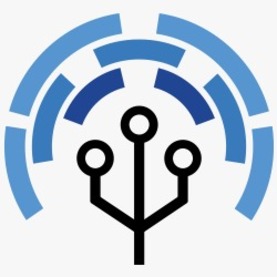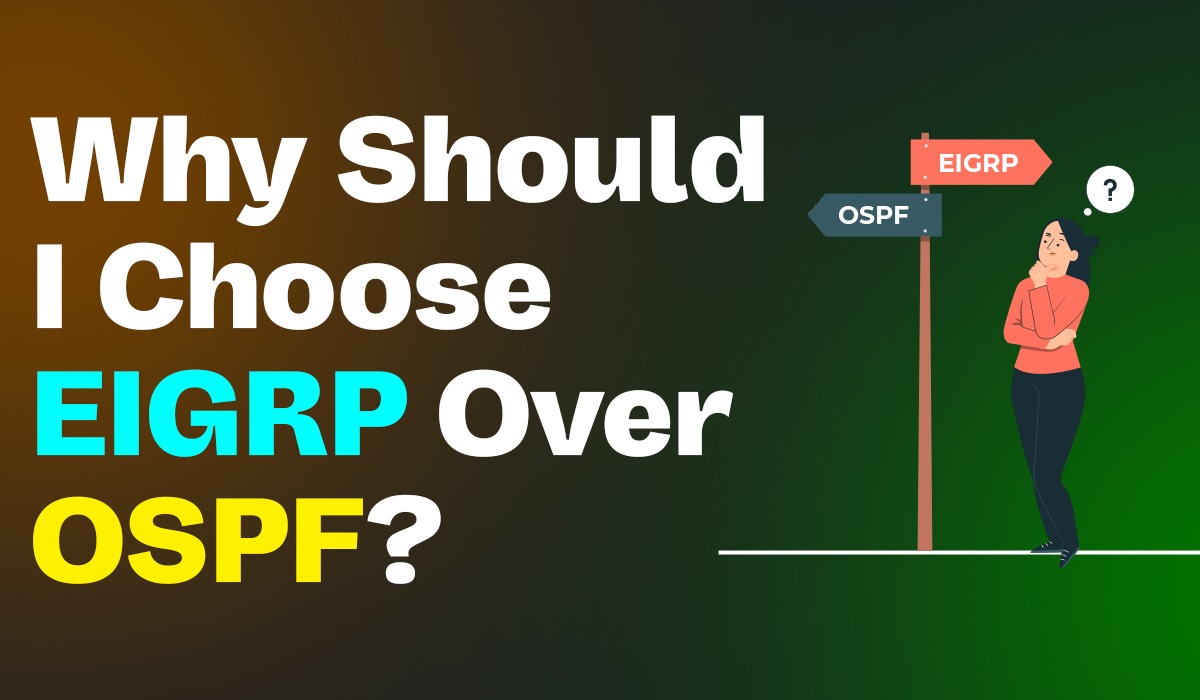Why Should I Choose EIGRP Over OSPF?
 PyNet Labs
PyNet Labs 
When selecting a routing protocol, two major contenders often come up: EIGRP and OSPF, both have their unique advantages and cater to different networking needs. Understanding why you might prefer EIGRP over OSPF requires a deep dive into their fundamental differences, strengths, and use cases.
What is EIGRP?
EIGRP, developed by Cisco, is a hybrid routing protocol that combines the features of both distance-vector and link-state protocols. This combination provides a balanced approach to routing, offering faster convergence times and more efficient routing updates. EIGRP uses the Diffusing Update Algorithm (DUAL) to calculate the best path to a destination, making it a reliable choice for dynamic environments.
Features and Advantages
Fast Convergence: EIGRP quickly adapts to network changes, reducing downtime.
Scalability: Handles large and complex networks with ease.
Efficiency: Utilizes bandwidth efficiently by sending only incremental updates.
What is OSPF?
OSPF is a widely used link-state routing protocol that builds a complete topology of the network and calculates the shortest path using Dijkstra’s algorithm. It is an open standard, making it compatible with a wide range of devices from different manufacturers.
Features and Advantages
Hierarchical Design: Uses a hierarchical structure with areas to manage large networks.
Open Standard: Compatible with various vendors, enhancing flexibility.
Scalability: Suitable for large enterprise networks.
Comparing EIGRP and OSPF
Explore the key differences between EIGRP and OSPF in this comprehensive comparison. Understand how EIGRP's hybrid approach and fast convergence contrast with OSPF's link-state design and scalability. Find out which routing protocol best fits your network needs.
Routing Algorithms
EIGRP's Diffusing Update Algorithm (DUAL): Calculates the best route and maintains a backup route to ensure quick recovery if the primary route fails.
OSPF's Link-State Algorithm: Requires each router to maintain a database of the entire network’s topology, which can lead to higher resource usage.
Metric Calculation
EIGRP Metrics: Considers factors like bandwidth, delay, load, and reliability to determine the best route.
OSPF Metrics: Uses a single metric, cost, which is typically based on the bandwidth of the links.
Convergence Time
EIGRP Convergence: Generally faster due to its DUAL algorithm, which can quickly find alternative paths.
OSPF Convergence: May take longer as it requires a complete recalculation of the network’s topology.
Scalability
EIGRP Scalability: Efficient in handling large networks with its incremental updates and hierarchical design.
OSPF Scalability: Scales well with its area-based structure but can be complex to manage in very large networks.
Key Differences Between EIGRP and OSPF
Protocol Type
EIGRP: Hybrid, incorporating features of both distance-vector and link-state protocols.
OSPF: Pure link-state, focusing on creating a complete network map.
Complexity
EIGRP Configuration: Generally simpler to configure and manage, especially in Cisco environments.
OSPF Configuration: More complex due to its area-based design and link-state database management.
Resource Usage
EIGRP Resource Efficiency: Less intensive on network resources due to its incremental updates.
OSPF Resource Efficiency: Can be more resource-heavy, especially in large networks due to frequent updates and the need for a complete topology database.
Area Design
EIGRP Area Design: Allows for a simpler hierarchical design without rigid area boundaries.
OSPF Area Design: Requires careful planning of areas to optimize performance and manageability.
When to Choose EIGRP
EIGRP is often preferred in environments where Cisco devices are predominant and where fast convergence and efficient resource usage are critical. It is also suitable for networks that require less complex configuration and management.
Suitable Scenarios for EIGRP
Cisco-Dominated Networks: EIGRP integrates seamlessly with Cisco equipment.
Dynamic Environments: Where rapid changes necessitate quick convergence.
Real-World Applications
Enterprise Networks: Where speed and efficiency are crucial.
Branch Offices: For simplified configuration and management.
When to Choose OSPF
OSPF is ideal for multi-vendor environments or large-scale networks that benefit from its hierarchical area design and open standards.
Suitable Scenarios for OSPF
Multi-Vendor Networks: Where compatibility across different equipment is required.
Large Enterprises: Benefiting from OSPF’s hierarchical design for scalability.
Real-World Applications
Service Providers: Where extensive network topology management is needed.
Large Organizations: For robust routing in complex network environments.
Case Studies and Examples
Successful EIGRP Implementations: Many enterprises choose EIGRP for its fast convergence and ease of use in Cisco environments.
Successful OSPF Implementations: Widely used by ISPs and large enterprises for its scalability and vendor-neutral approach.
FAQs - Frequently asked question
What are the main advantages of EIGRP over OSPF?
EIGRP offers faster convergence, more efficient bandwidth usage, and simpler configuration in Cisco environments.
Can EIGRP and OSPF be used together?
Yes, in multi-protocol networks, EIGRP and OSPF can be used in different areas or interconnected via redistribution.
How does EIGRP handle large networks compared to OSPF?
EIGRP handles large networks efficiently with incremental updates and hierarchical design, while OSPF’s area-based design helps manage extensive networks.
What is the impact of EIGRP and OSPF on network performance?
EIGRP generally has less impact on performance due to its efficient update mechanism, while OSPF’s performance may vary based on its topology database size.
Are there specific industries that prefer one protocol over the other?
Industries with Cisco-centric networks often prefer EIGRP, while those needing interoperability across different vendors may opt for OSPF.
Conclusion
Choosing between EIGRP and OSPF depends on your specific network requirements, including device compatibility, network size, and the need for fast convergence. EIGRP excels in Cisco environments with its hybrid approach and rapid convergence, while OSPF is preferred for its open standard and scalable hierarchical design.
Subscribe to my newsletter
Read articles from PyNet Labs directly inside your inbox. Subscribe to the newsletter, and don't miss out.
Written by

PyNet Labs
PyNet Labs
PyNet Labs is a reputable networking training institute that provides a variety of courses to both students and working professionals. The main aim of PyNet Labs is to make higher education more affordable so that more people can achieve their dream jobs.